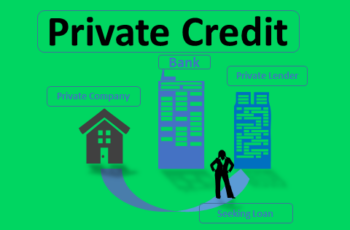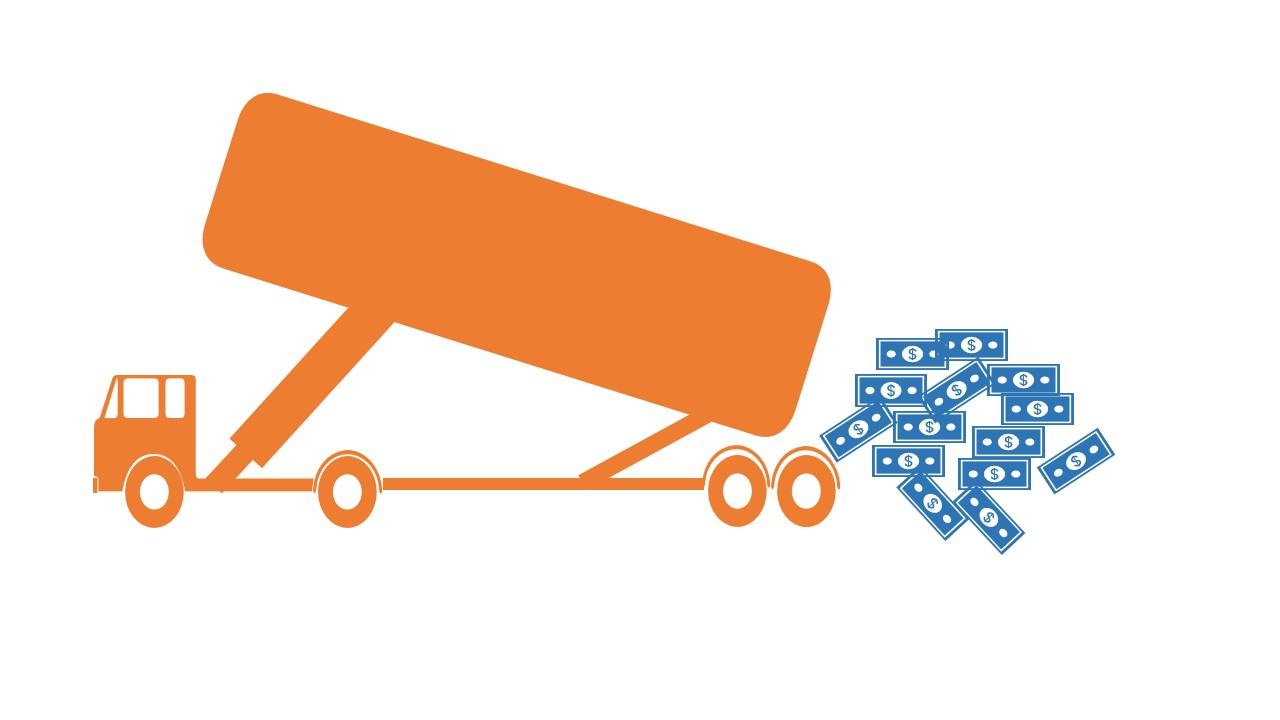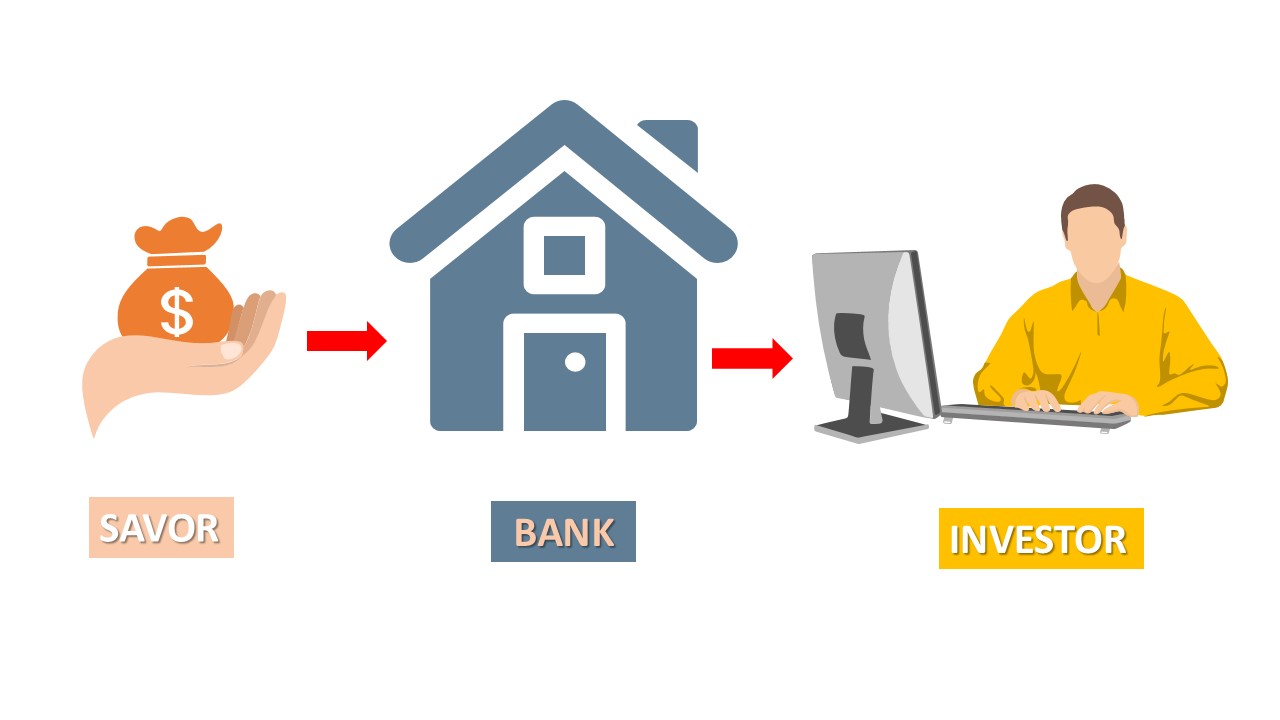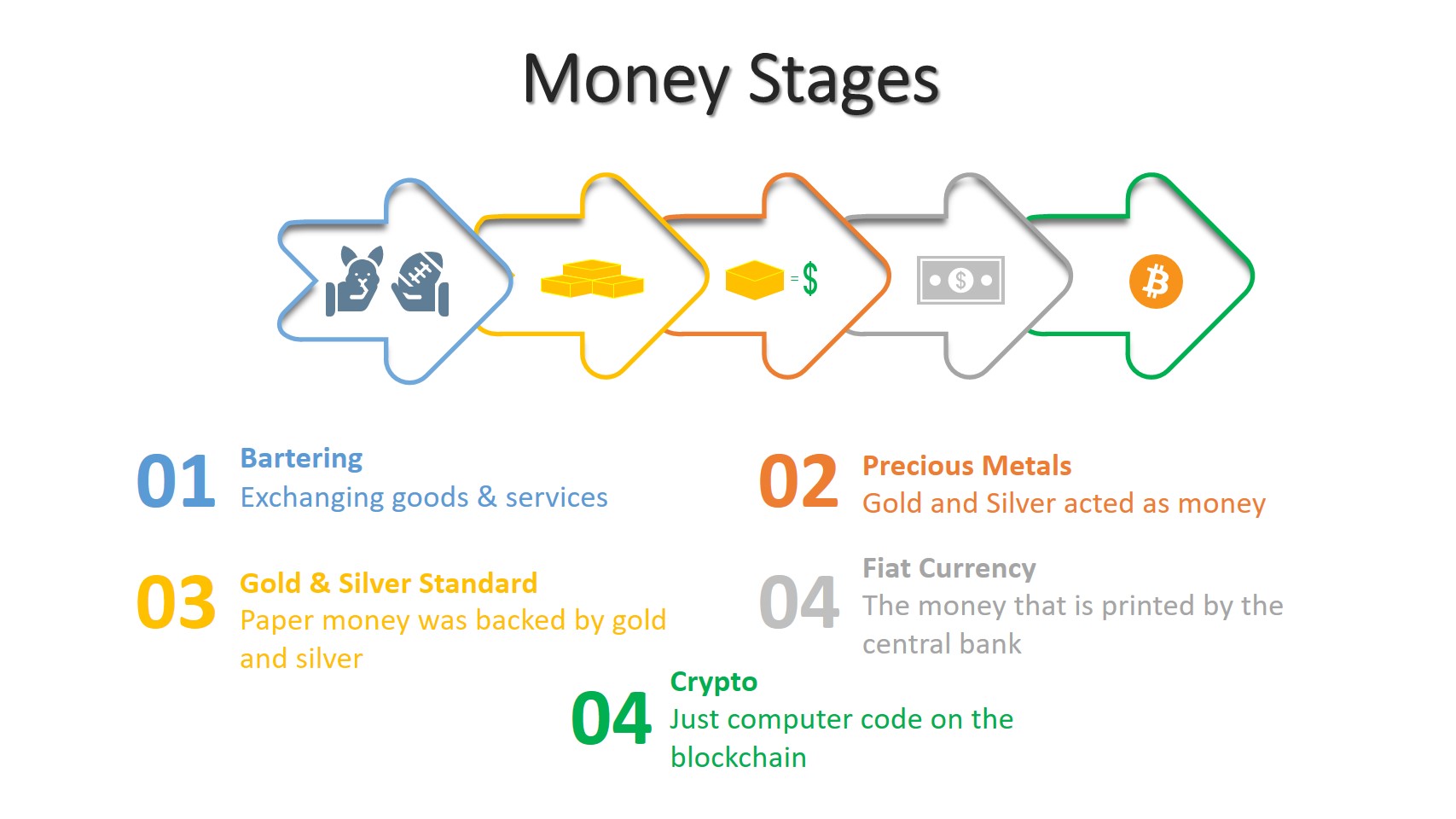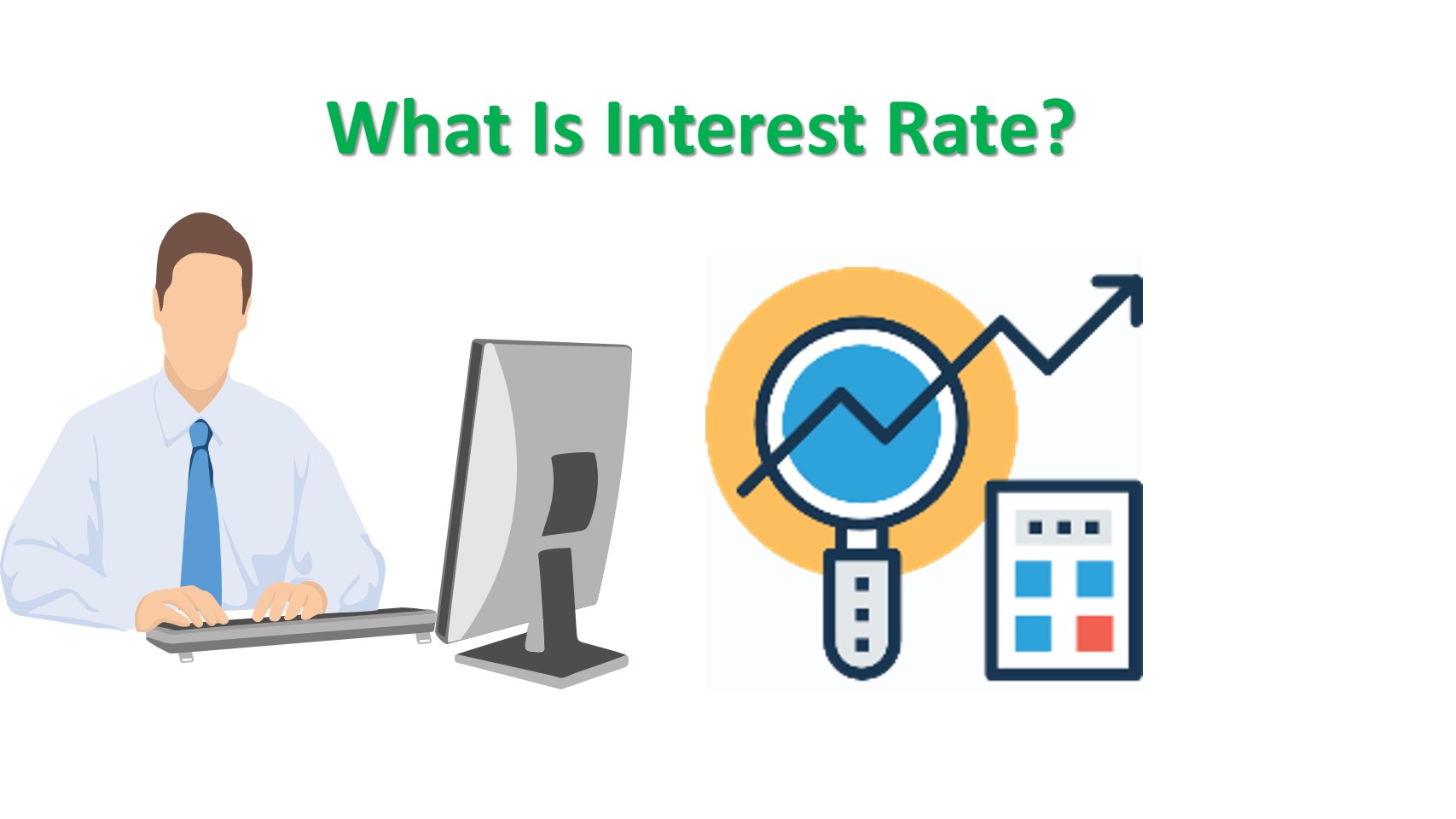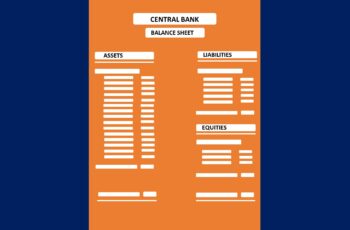How do banks make money? They make money in various ways. It depends on what they select to do.
Generally, banks make money using their customers’ money.
However, this article explains five common ways that banks make money. Additionally, it elaborates on how banks create money out of nothing enabling them to lend multiple times more than deposits by their customers.
Bank definition: a bank is an intermediary financial company that links those who have money and those who need money.
1. Receiving Interests
Banks link owners of money to those who need it. Accepting deposits and providing loans is the main function of banks. However, you will read that banks found many other ways to make money.
Banks pay interest (if the interest rate is positive) to depositors and receive interest from those who received loans.
You may ask if banks pay and at the same time receive interest, how do banks make money?
There are two ways that banks make money accepting deposits and giving loans. First, a bank provides loans at a higher interest rate than the rate that gives their customers. Second, they are creating money out of nothing in a process called fraction banking.
Central banks impact hugely the interest rate that commercial banks charge their customers. Basically, the central bank (Fed Reserve in the USA) set the interest rate that it pays on reserve balances of commercial banks. And, commercial banks considering this rate, decide on how to set their own rates.
2. Currency Exchange Commission
No country is completely independent from trading with others. Even North Korea, the most closed economy, trades goods and services with other nations such as China and Russia.
Except for the USA traders that pay in United States Dollar, and Euro-dominant countries in Euro when trade with each other, other nations need to exchange domestic currency for USD or another currency to buy goods and services.
And banks exchange currencies for traders and charge a commission.
3. Fees Associated with Account
Banks charge for several reasons and services.
Fees associated with services are justified. But some fees are not justified without providing any service.
These fees vary depending on your bank and location. Some charge and some do not. So, make sure to check your bank’s website to know more.
In the following, I have not covered all types of fees. However, they are most common and they are:
Monthly Maintenance Fee
Some banks charge a monthly maintenance fee on specific accounts, such as current accounts.
However, some banks do not charge if their customers keep a minimum amount set by banks.
Out-of-Network ATM Fee
Every bank has its network of ATMs. However, you can withdraw funds from the ATM network of other banks for a fee.
Excessive Withdrawal Fee
An excessive transaction fee is levied on saving account holders that withdraw more than the number of times determined by the bank.
Overdraft Fee
Sometimes an account holder may need to withdraw more than he has in his account. And the bank pays with a fee, known as the overdraft fee.
Insufficient Fee
Some banks charge a fee if an account holder has less than a predefined minimum amount.
Wire Transfer Fee
A business or person may send money from one account to another domestically or internationally. Banks do it for you charging you a fee.
Early Account Closure Fee
Some banks charge you a fee if you close your account in less than six months or one year.
POS Fee
In some countries, some banks charge retailers a POS fee. These charges are due to processing transactions and clearing processes.
Late Payment Fee
When a debtor fails to make a payment on time, banks charge an extra amount known as the late payment fee.
Card Transaction Fee
Every time you buy something online, your bank charges you for the processing of the transaction.
4. Investment
Investment is the main job of investment banks. Meanwhile, commercial banks also invest in financial markets such as stock and derivatives.
5. Forex Trading
Forex trading or currency trading is the exchange of currency for another.
Banks are good at forex trading because they are engaged and experienced with money management. Moreover, they hire the best professional financial analyst to research and forecast what might happen in the currency market.
5. Custody Fee of Jewelry and Precious Metal
Some banks have volts for safeguarding documents and precious metals. And charge a percentage, generally, 1-1.5 percent.
Why Do People Deposit in Commercial Banks?
People put money in the bank (deposit) for many reasons, and some of them are:
Safety
Banks are much safer than most of the houses in the city. You are not always at home. If thieves know that you keep money at home in a box, the chance of stealing by thieves increases many times, especially when you are not at home. Plus, banks have organized safety programs and invest a lot of money for safety purposes.
Convenience
It is convenient because banks record every transaction and have many branches all over the country. All of these branches provide you with the same quality services.
Redeemable
Redeemable means you can request your money from the bank at any time, in full or partial amount. However, to redeem in full, you should not have put your money in a fixed deposit account.
Receiving interest
Your money works for you. You receive interest for the amount and time that you have deposited.
How Commercial Banks Create Money Out of Nothing?
Banks create money out of nothing. That is why they can lend several times more than deposits by their customers.
It is possible because all depositors do not demand their money at once. The banks keep the only necessary amount to not face cash shortages.
The money creation formula determines the amount of money that a commercial bank can create.
For example, if you deposit $1000 and the reserve ratio is 10%, a commercial bank can create $9000.
The reserve ratio in the above formula needs more explanation.
What is the Required Reserve Ratio?
Central banks set the Required Reserve Ratio (RRR). It is a percentage of deposits by customers that commercial banks need to keep for unexpected events.
The Required Reserve Ration (RRR) also limits how much commercial banks can lend (or create money). A higher reserve ratio means more limitations in creating money by commercial banks and vice versa.
This ratio is one of the money supply tools as well. Governments cut the reserve ratio to increase the money supply and raise it to decrease the money supply.
In countries such as Japan, people trust banks, and the government keeps the reserve ratio low compared to other nations such as India. This policy enables commercial banks to create money even more.
Some banks optionally keep a higher reserve to protect themselves and their customers from unwelcome events. It is known as Excess Reserve Ratio (ERR).
In this article, the reserve ratio means summing both RRR and ERR.
Example of Money Creation by Commercial Banks
To make this article shorter, assume that the reserve ratio is 25%.
Note 1: For the sake of simplicity, we assume that there is one bank. It does not matter how many banks are in a nation. The money creation process in “how banks make money” is the same because the money just travels from one bank to another, in case there are multiple banks.
Note 2: This example is just for illustration and does not follow accounting rules.
Suppose that Srading Bank receives $10,000 from Ahmad as a deposit. Now the cash and liability both increase by $10,000.
Now, suppose Mahmood is a borrower. There is $10,000 available in the bank for lending that Ahmad deposited. The Srading Bank can lend only $7,500 because the bank should keep 25% of deposits in cash as a reserve required by the government (central bank).
The Srading Bank lend Mahmood $7,500. It does not pay cash to Mahmood instead, he opens an account for Mahmood in the bank (he can open an account in another bank, and eventually the money will be deposited back in one of the commercial banks). Mahmood spends the borrowed amount when he needs to.
Now, the accounting entries in the Srading Bank look like the following.
The Srading Bank finds another borrower. His name is Aman.
The total amount of available deposits for lending is $7,500. If the bank lends again, it should keep 25% of % the 7,500 as a reserve.
The bank keeps $1,875 out of $7,500 as a reserve and lends $5,625 to Aman. Aman also opens a bank account and deposits the borrowed amount into his account.
Accounting entries in the Srading Bank, after the second loan provision, look like the following.
Now the total amount that the Srading Bank has lent equals $13,125 (7,500+5,625=13,125), which is the total amount lent to Mahmood and Aman, total amount as the reserve is $4,375 (2500+1875=$4,375), and the total amount of cash is still $10,000 ($5,625 of Aman deposit plus $4,375 kept as reserve).
If the bank finds another customer, it will keep 25% of the $5,625 that Aman deposited and lend the rest to a new customer.
The Srading Bank will continue lending from the available deposits to the new customers till the total amount lent reach $30,000.
What Happens If Banks Do Not Accept Deposits?
Without accepting deposits, banks do not profit.
I like to explain it with a simple example in the coming paragraphs.
So, let’s begin with bank accounting and examples that make sense.
Side note: this example is just for clarification and does not follow accounting principles.
Before we start, for simplicity, let’s base some assumptions before acceptance of deposits from customers, and they are:
- No one has deposited;
- There are no startup costs;
- The owner of the bank lends the amount that he invested in the bank;
- The borrower receives all the amount; and
- Later the bank issues bonds.
Mr. Zafari found a bank and named it Srading Bank. He invested $1m in the bank. So, the accounting will look like this.
Now suppose that the Srading Bank loan to an investor called Omid. The interest rate is 10%. Omid has a business where he makes his profits. The accounting now looks like the following.
In the above entry, the accountant has divided the cash into cash and loan. Equity has not changed yet.
Now it is time for Omid to pay his debt and the interest. Omid pays them. Now accounting looks like this below chart.
Earlier, we assumed the startup costs were zero but did not assume the same for operation costs.
Operation cost in most service companies is the biggest part of total expenses. So, suppose that after a while (one year, for example) the operation cost of Srading Bank totaled $100k. Now the summer account looks like the following.
As you see, a commercial bank without a deposit can not profit.
To be profitable, banks need to accept deposits or borrow.
Banks accept deposits from individuals and borrow from institutions. You may have a question why does the bank borrow? The answer is that the bank borrows at a lower rate and lends at a higher rate.
They can borrow at a lower rate because they can pay back, and there is little risk of no payment. Because a bank has experts managing loans, it can lend at a higher rate than it borrows.
Banks can borrow at a lower rate because the bank can pay back, and there is little risk of no payment. Because the bank has experts managing loans, it can lend at a higher rate than it borrows.
These institutions lose money instead of profit if they borrow and lend the same amount. Salary of employees, depreciation of fixed assets, rent, inflation, cost of opportunities, and so on are expensive.

